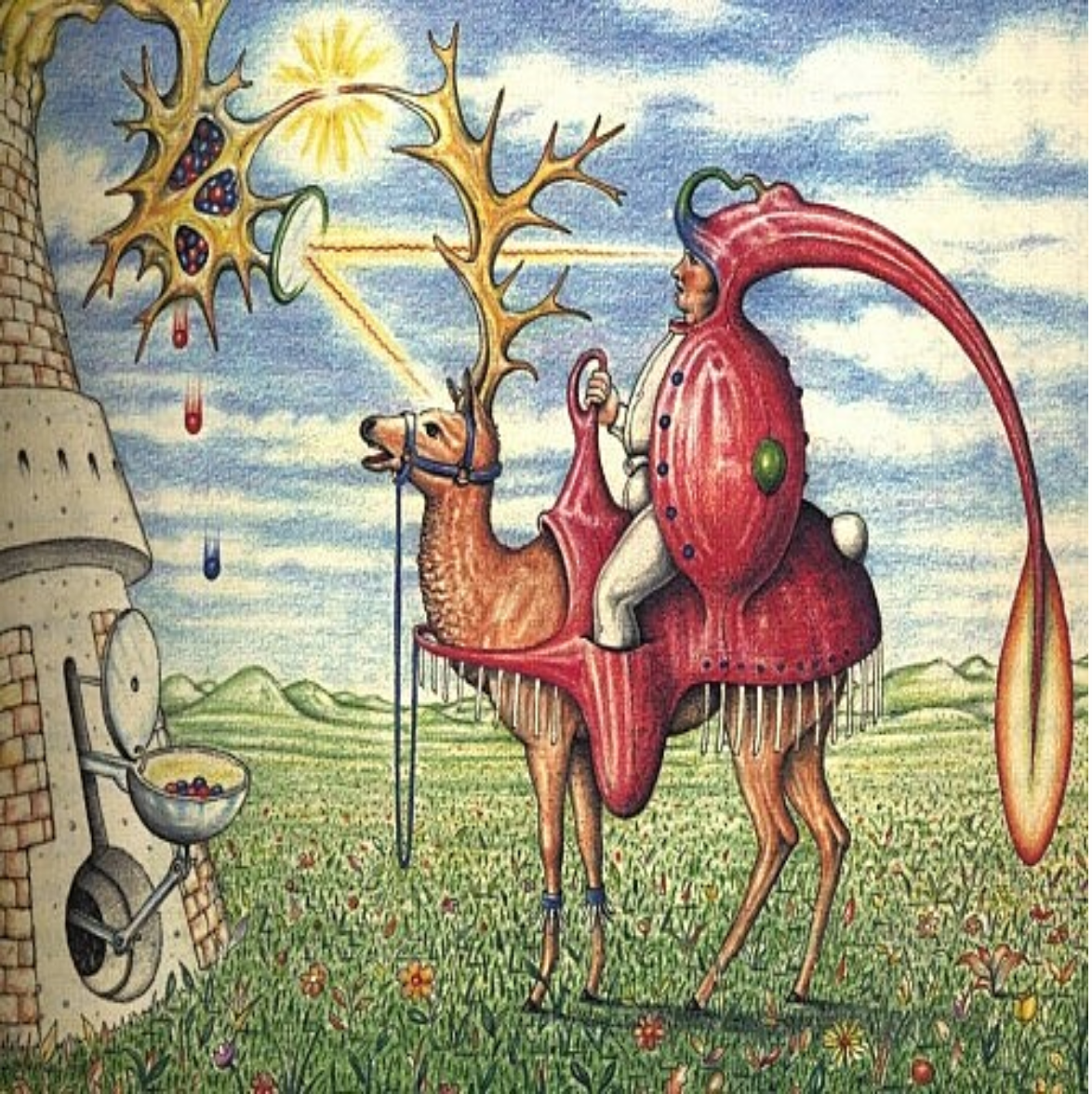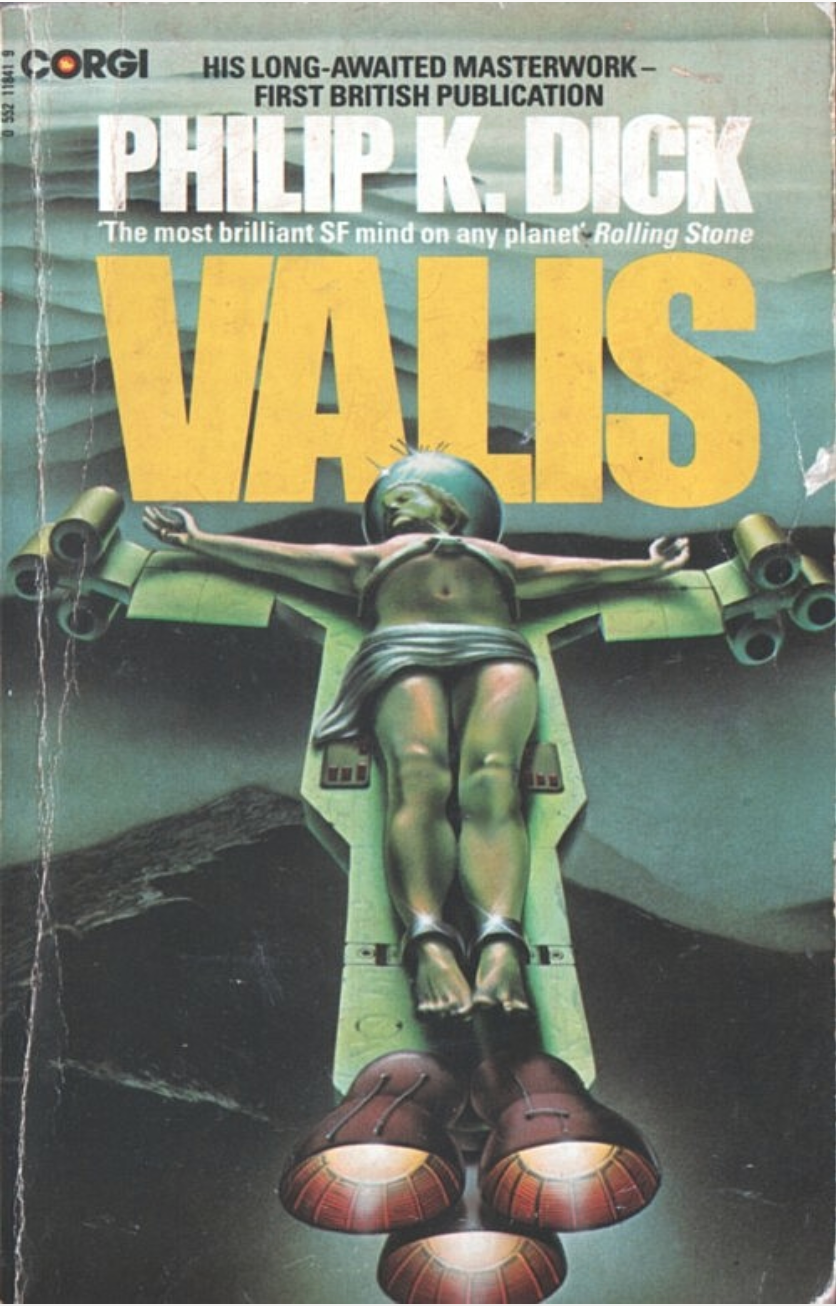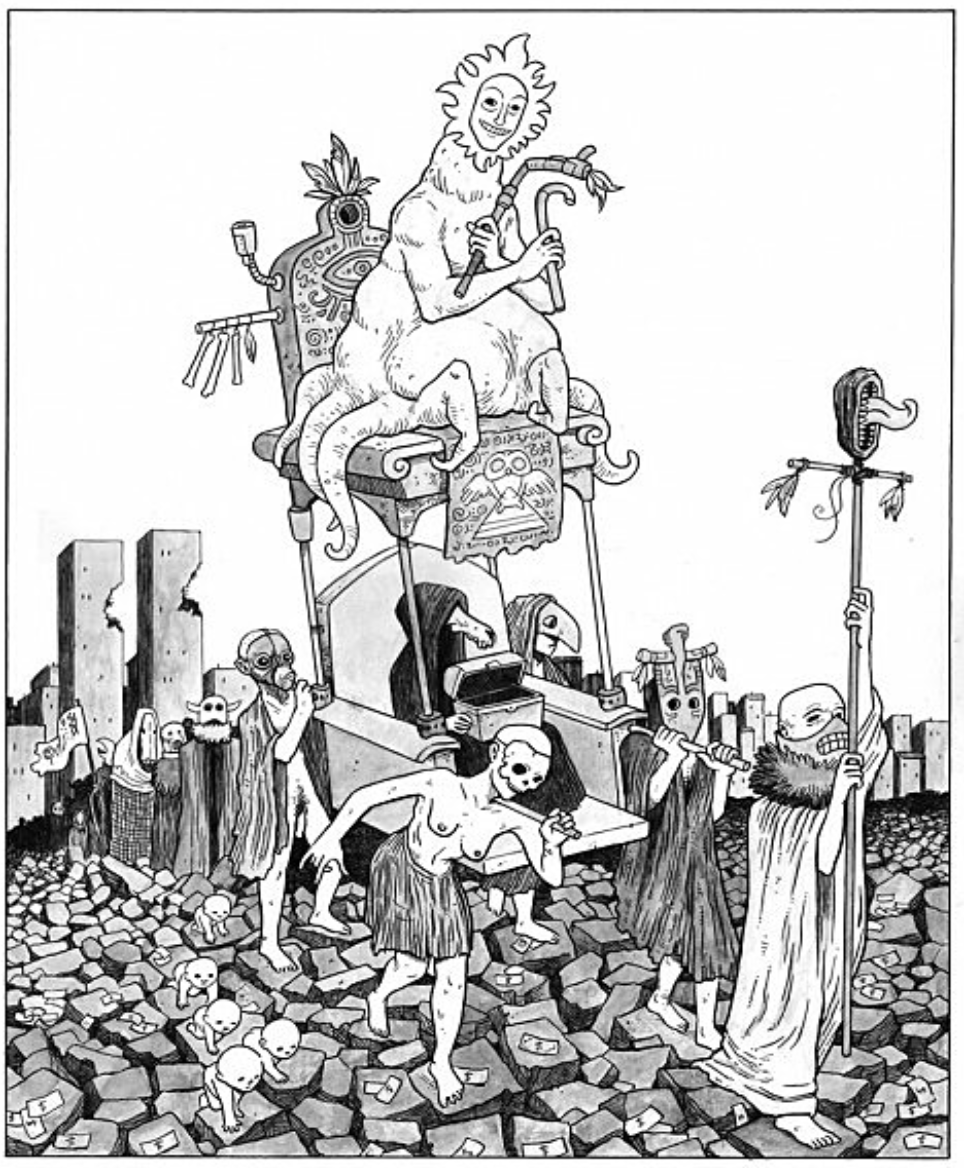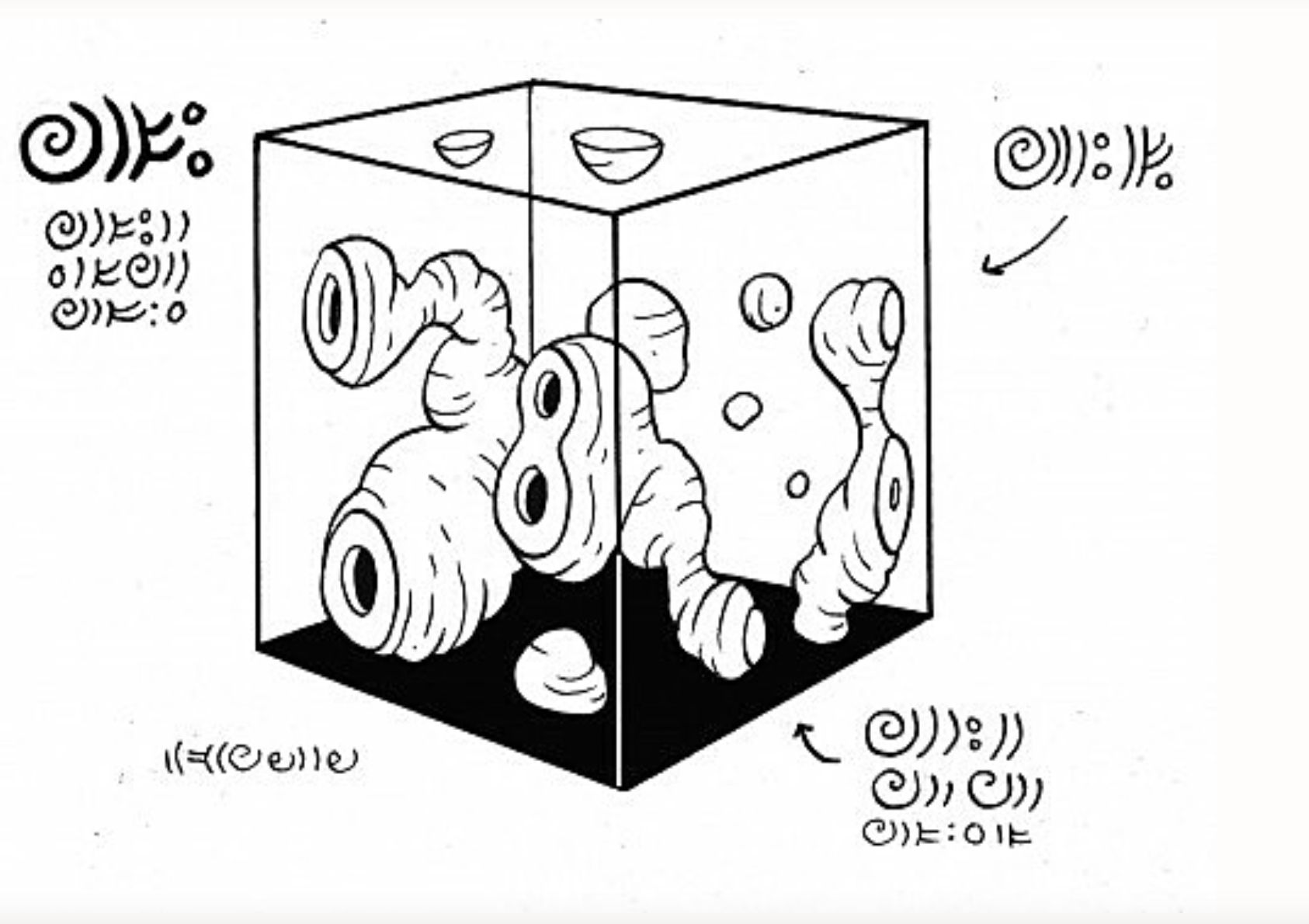Codex Seraphinianus
Cryptic art that frustrates even as it captures your imagination. What's the allure? And is it better than, say, a nice watercolour?
The art I best enjoy is puzzling. It puzzles. Part of the satisfaction derived from it is the feeling of not knowing quite what’s going on, but that knowing is potentially possible. It’s the haunting sensation that you’re missing just one or two vital pieces of information, which if known would snap everything into proper focus. Trying to work out what you’re missing – sometimes, whether you’re missing anything at all – is part of the process of enjoyment.
Years before straightforward puzzle-solving games like Myst or The Neverhood, there was the Codex Seraphinianus. Published in 1981 by Italian designer Luigi Serafini, the Codex is a 300+ page encyclopaedia of some alien world or alternate reality, written in an unknown language.
Two things make the Codex particularly engaging as a work of art. Firstly, Serafini has illustrated his book with rich images that seem to combine the best features of grotesque surrealism, a 19th-century naturalist’s sketchbook, and the marginalia of medieval scripture. Familiar shapes and representations are made incongruous by their contexts and accompanying images. Snakes as shoelaces, biting their wearer; distorted flowers hiding themselves underground from the sun; machines as people as animals as garden implements.
Secondly, the writing that accompanies these images, documenting and captioning them, is not only beautiful but functional. Letters and words repeat to create paragraphs without meaning, or whose meaning is hidden permanently beyond understanding. After years of casual work by a cadre of cryptographic amateurs and professionals, for example, it was discovered the numbering system – each page is numbered along the bottom – is a variant of base 21. Little wonder, with such tantalising hints that the work isn’t nonsense, that the Codex has a dedicated following; it seems to promise not only beauty, in its images and typography, but some deep, authentic meaning, if only there were a key to access it.
Despite the book’s origins being well-documented and numerous interviews given by its creator, the work’s inherent inscrutability acts as both shroud and magnet – and the darker the shroud, the stronger the magnet becomes. It’s a phenomenon common to many such compulsively intriguing oeuvres. The 15th-century Voynich Manuscript may or may not be a work of art, but cryptographers have long struggled to decipher its neatly lined, impenetrable runes. Philip K. Dick wrote over 8,000 pages documenting his visions; he wasn’t sure if they were sent by aliens or gods or created by his own drug-fractured mind, but there’s again the sort of twisted logic that makes them compelling – that makes the human mind, instinctively running pattern recognition software, sit up and take interest.
Closer to home, more than anything the Codex reminds me of the work of local artist Tim Molloy. Molloy’s striking, disconcerting art ran prominently in Auckland University’s Craccum magazine in 2007 and 2009, and shares some features with the Codex – the alien language, the nearly-comprehensible mythos. It’s far darker than the Codex, however, with the misadventures of its sometimes-protagonist, Mr. Unpronounceable, provoking a kind of gleeful existential horror.
These artefacts seem almost an antidote to the postmodern belatedness that troubles many contemporary cultural products – the feeling that someone’s made something just like this somewhere else in the world, or that they already did, ten or thirty or a hundred years ago. Each work is unique in its own brand of incomprehensibility, rendered unattainably attractive by refusal to divulge anything meaningful apart from a raw aesthetic buzz. Internally consistent – logical, even – they’re nevertheless opaque to enquiry. Like an intangible itch in the corner of your mind, their enduring, beautiful mystery lies in the fact they can’t be scratched.
Download the Codex here (53mb).






